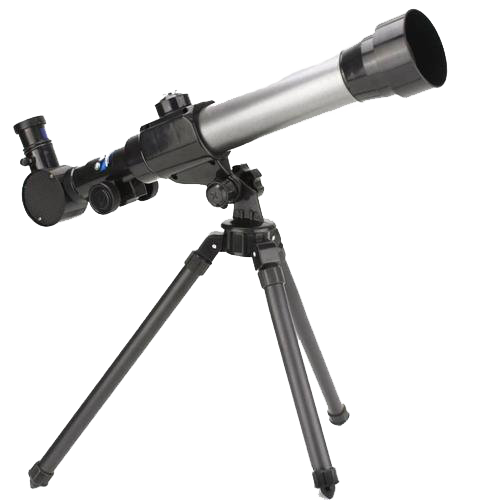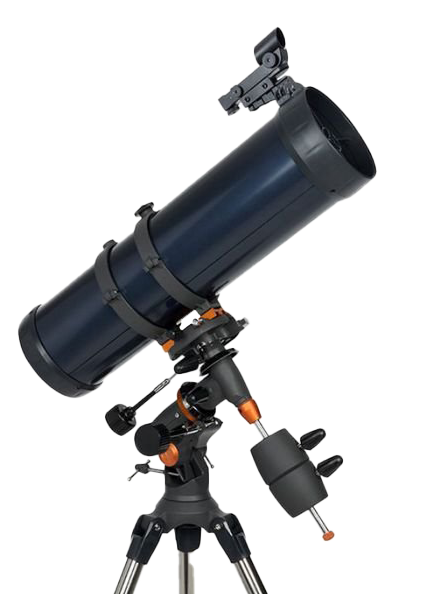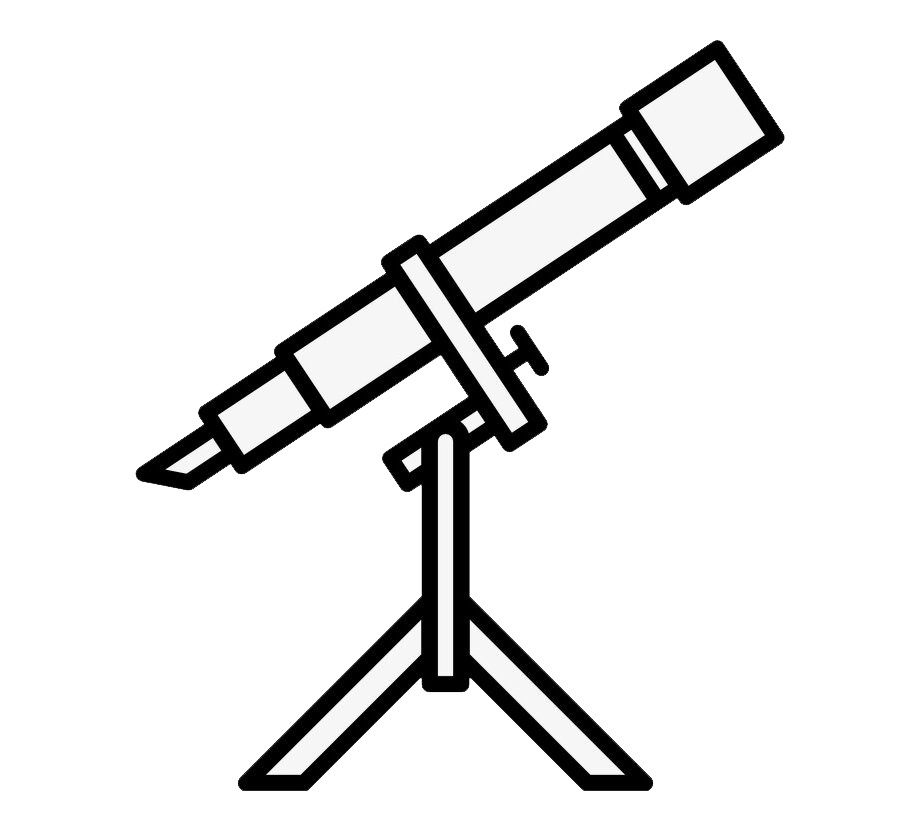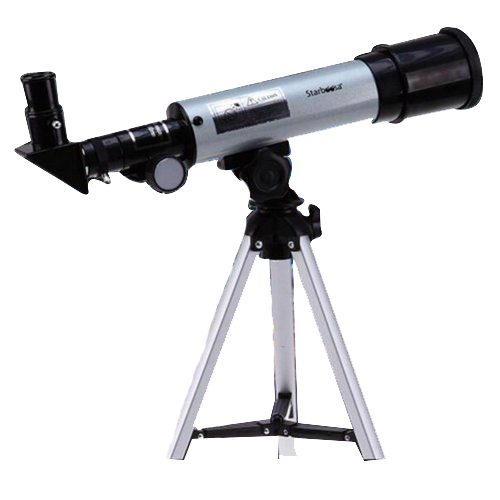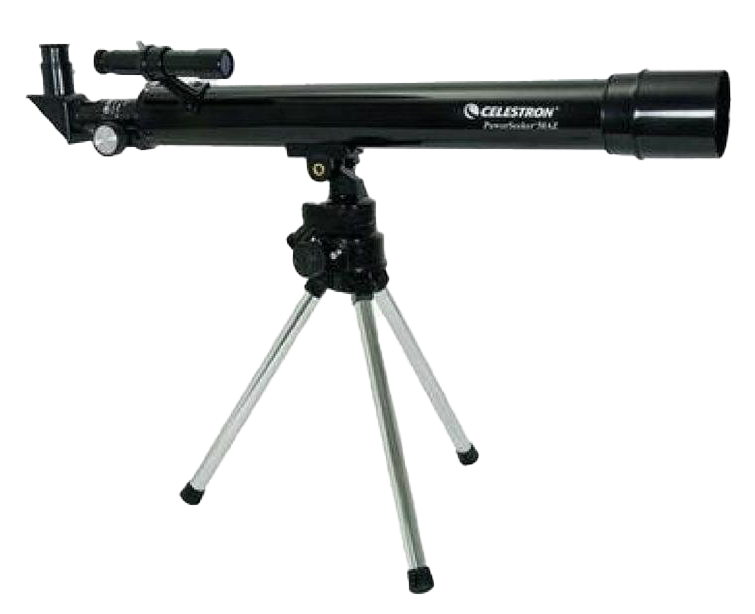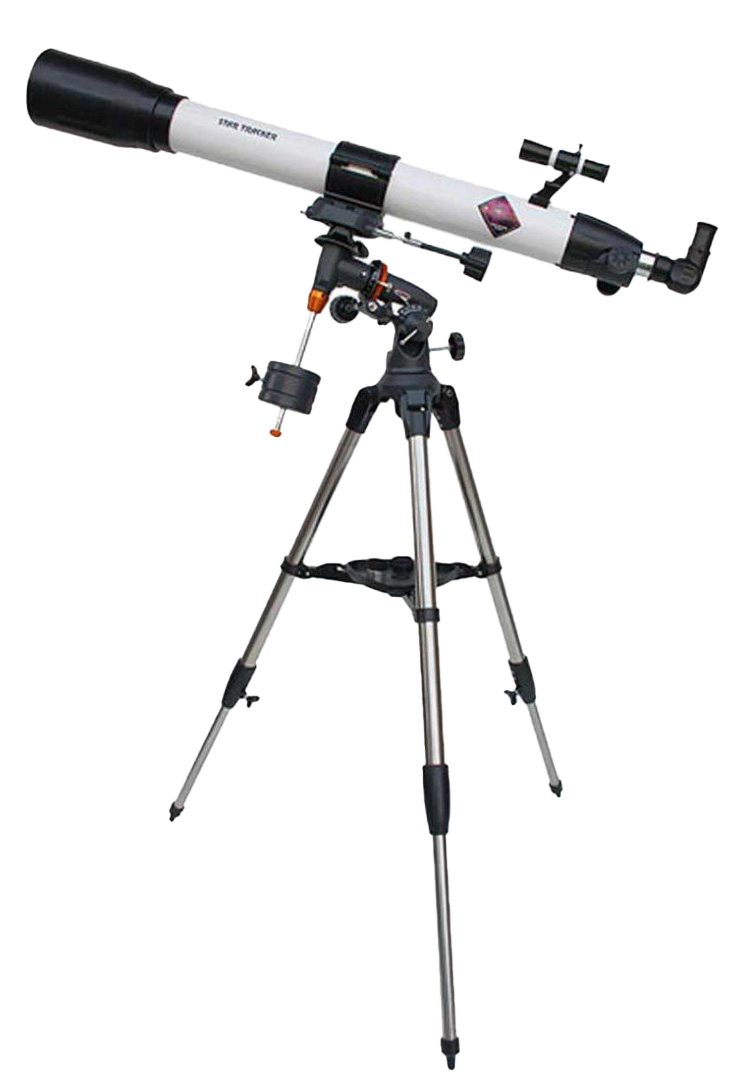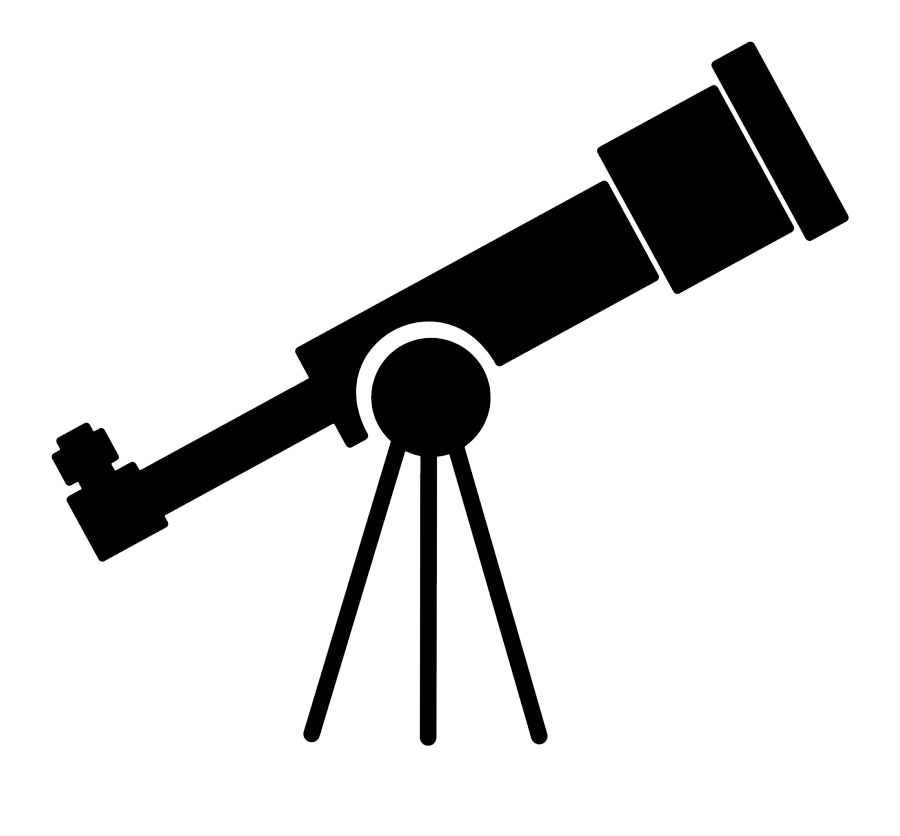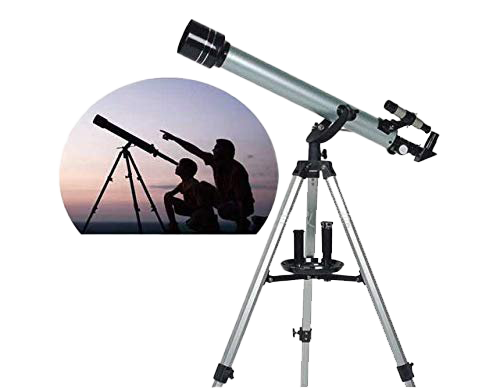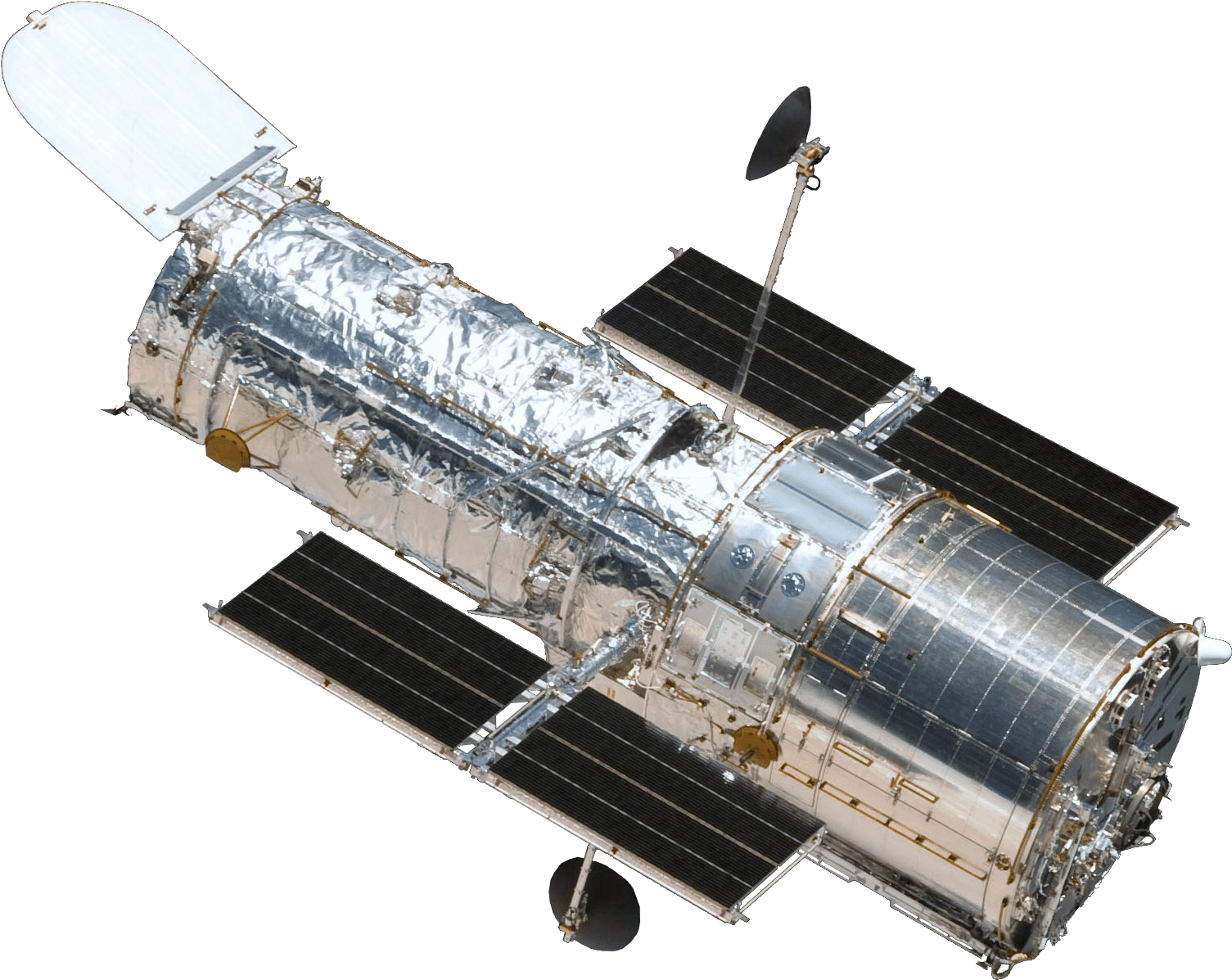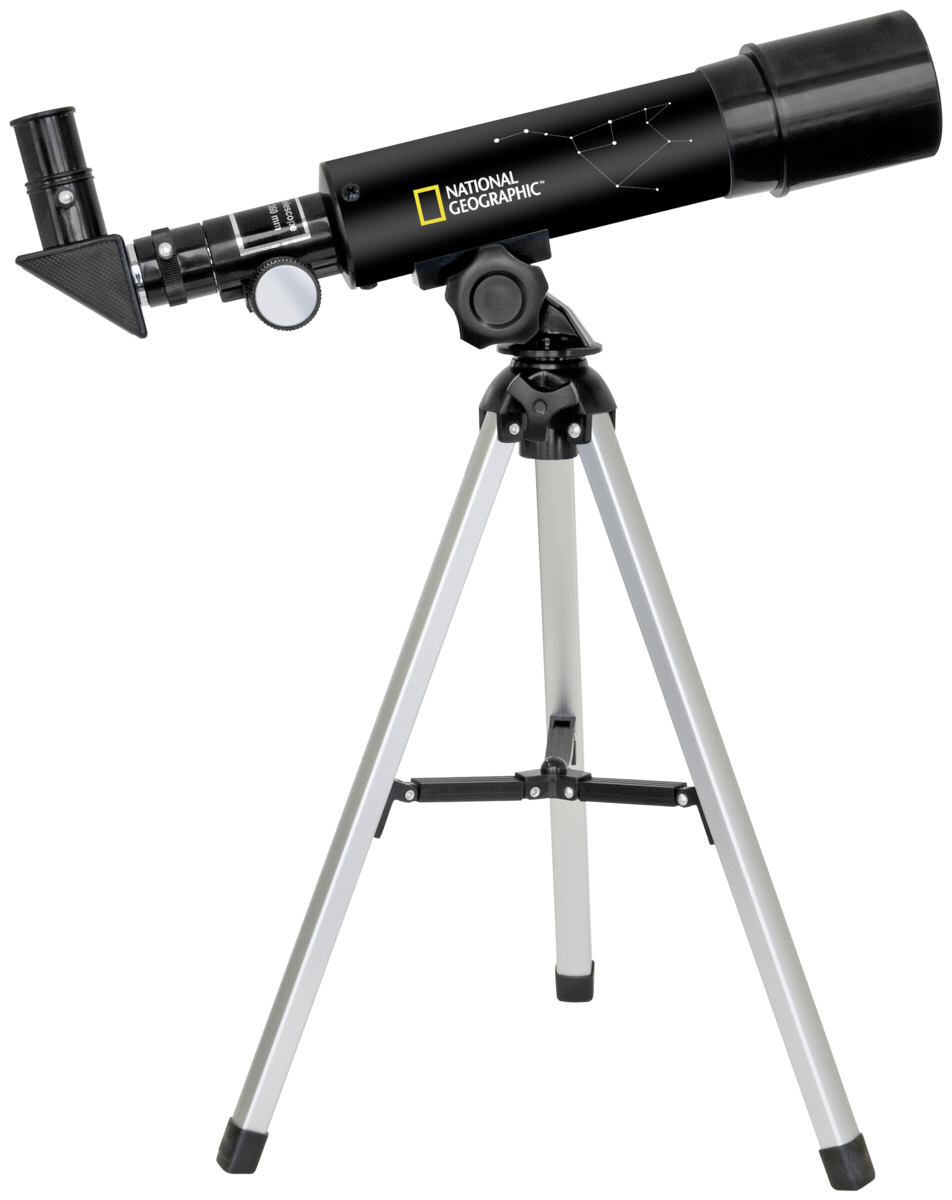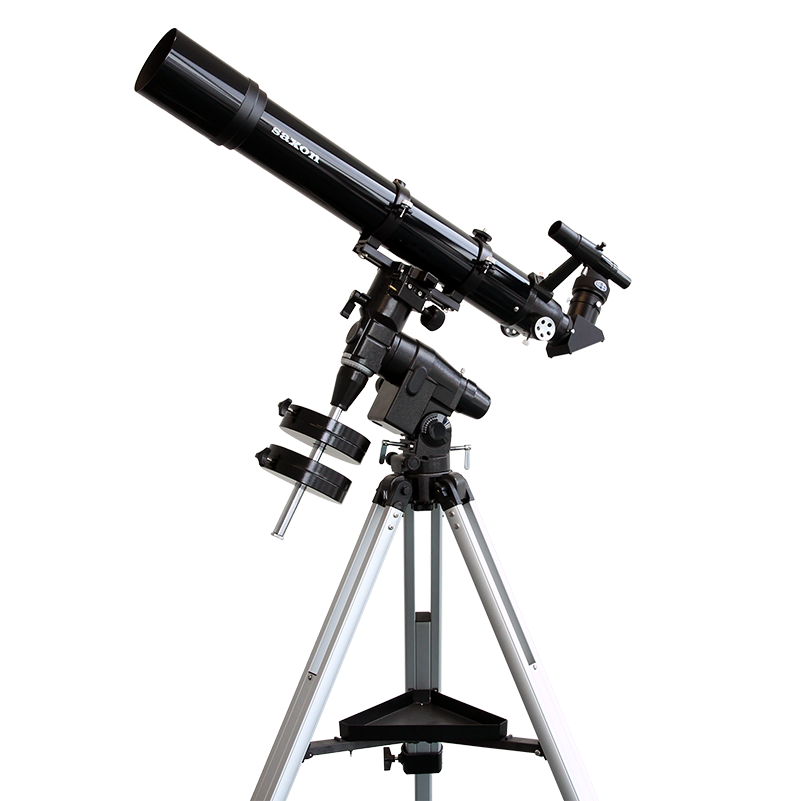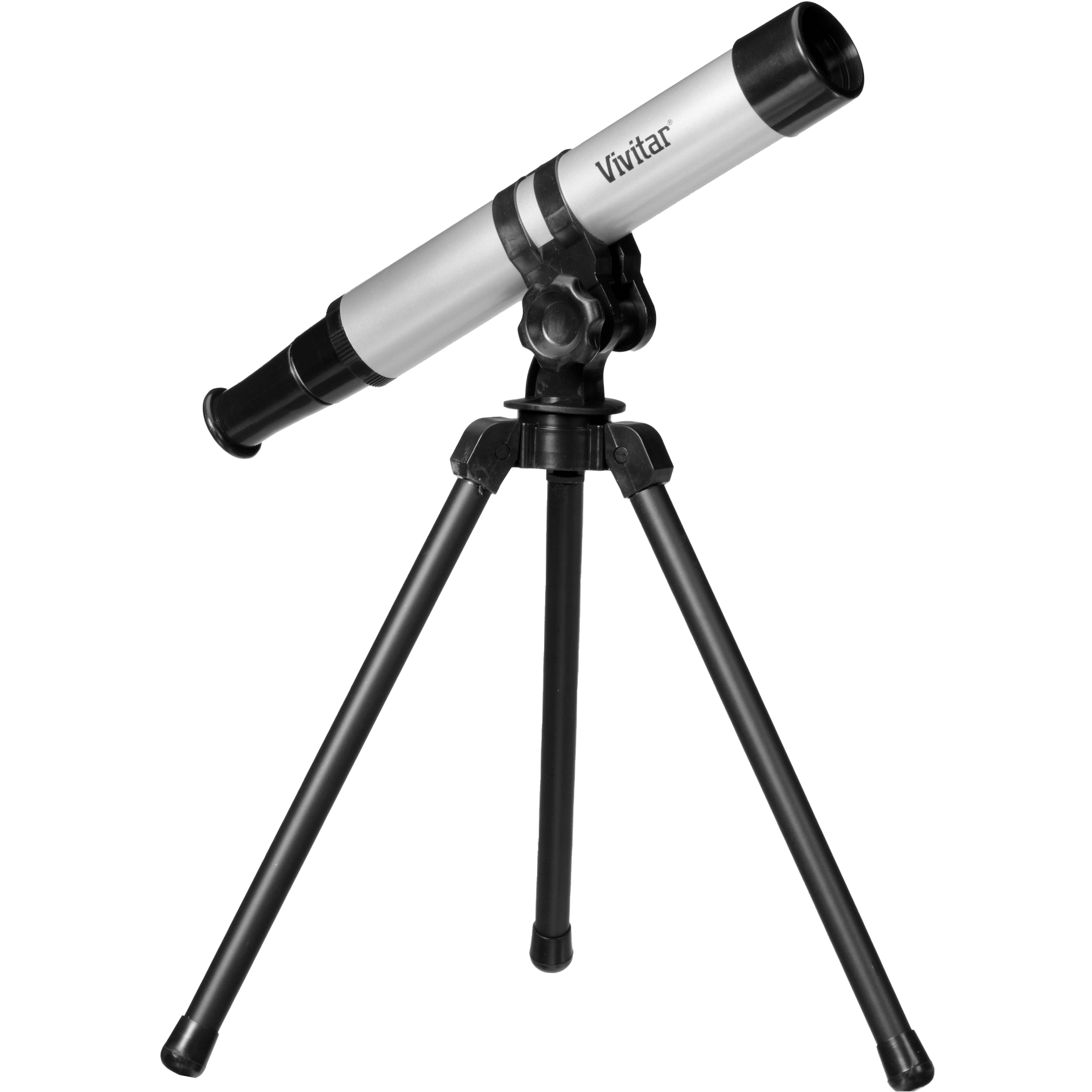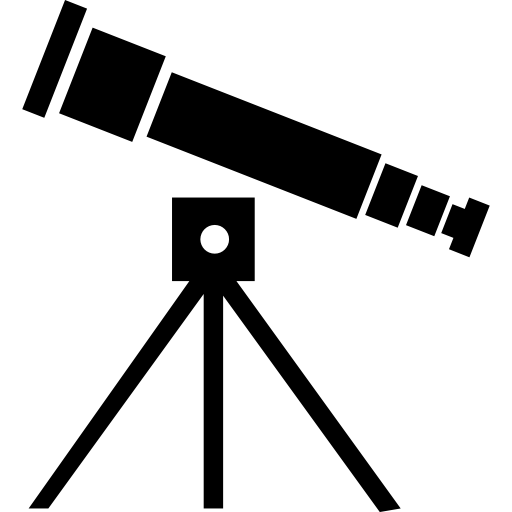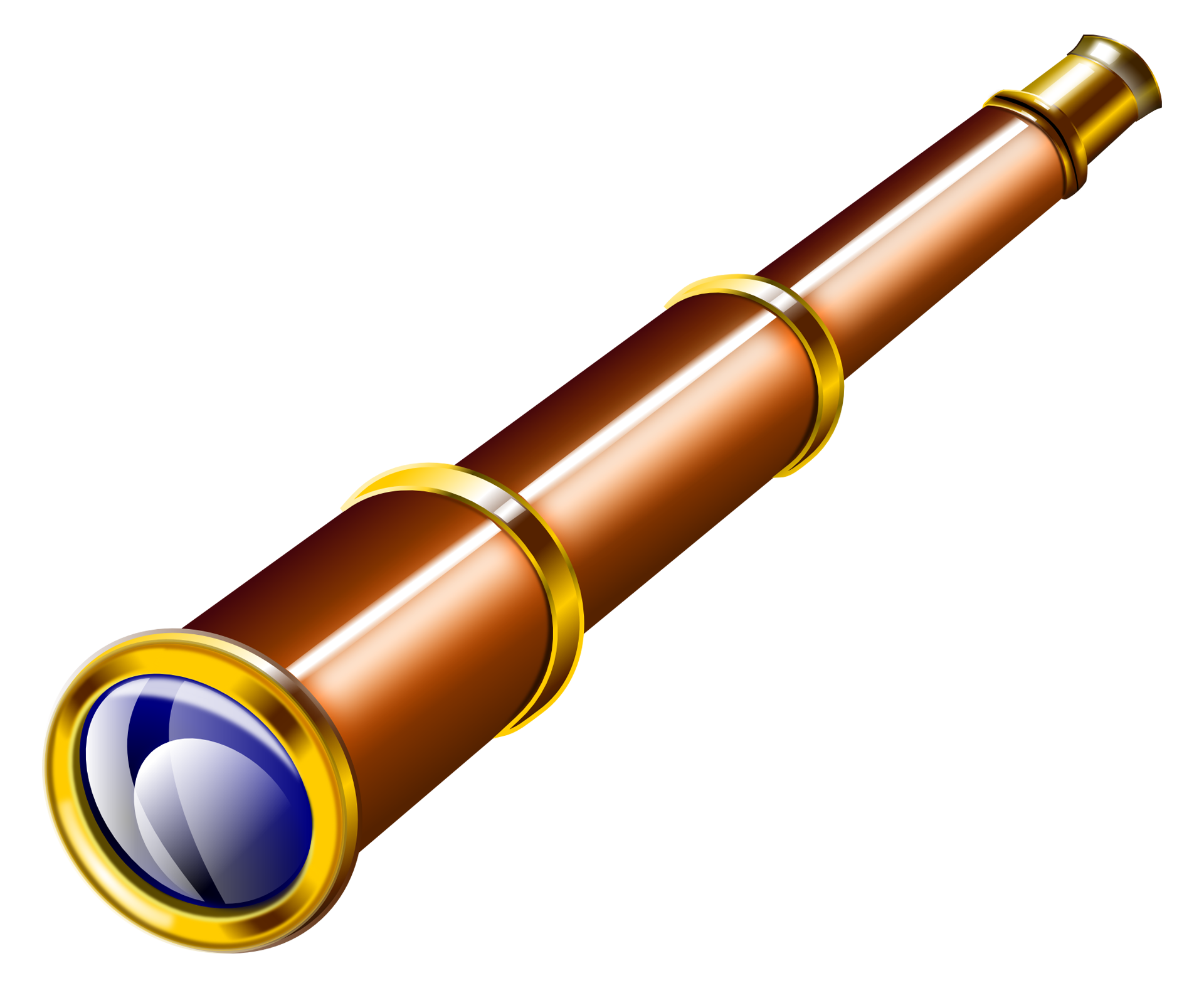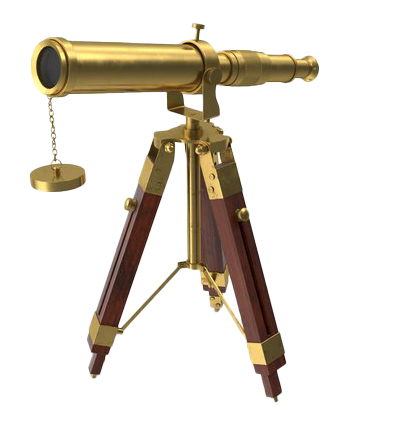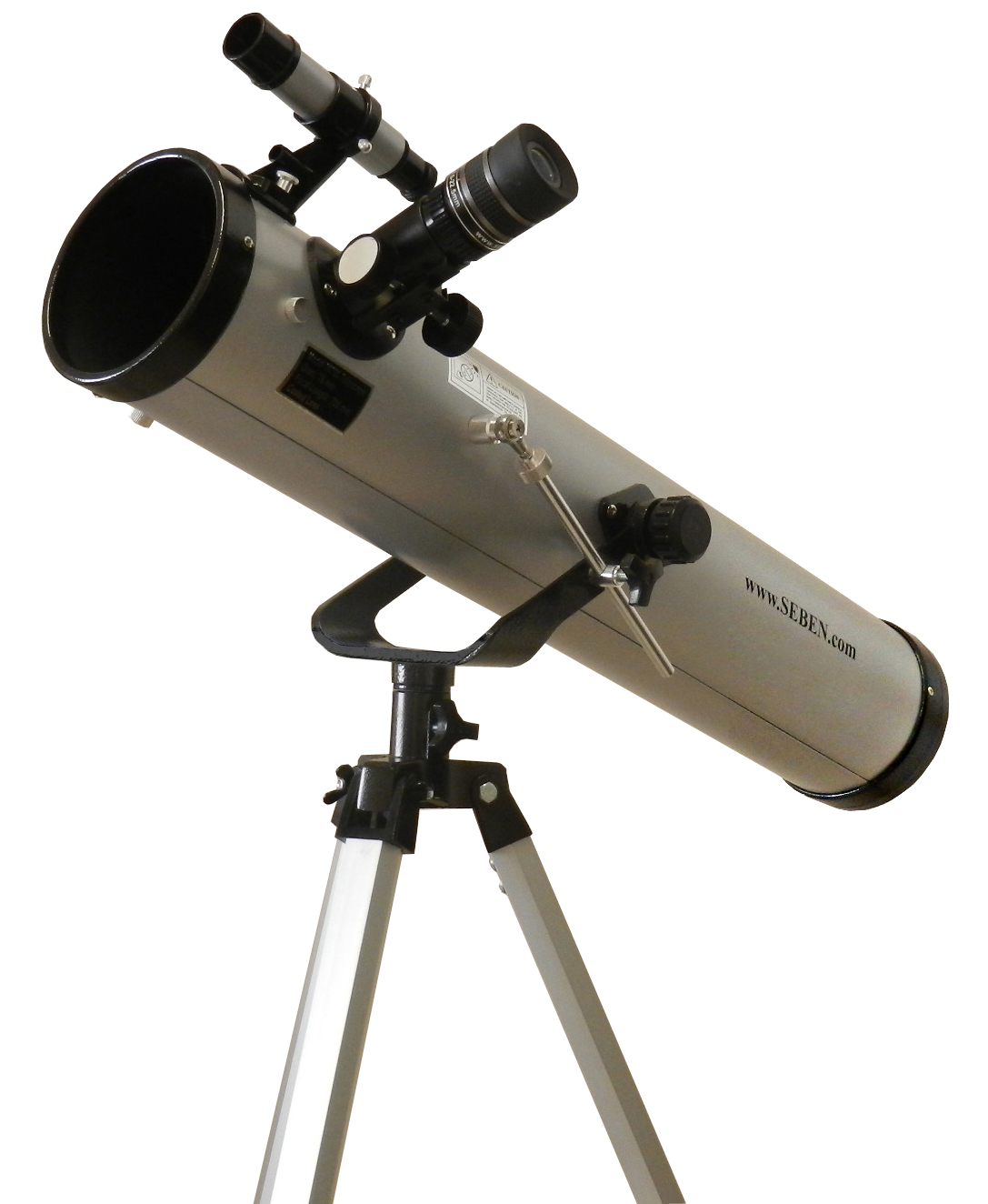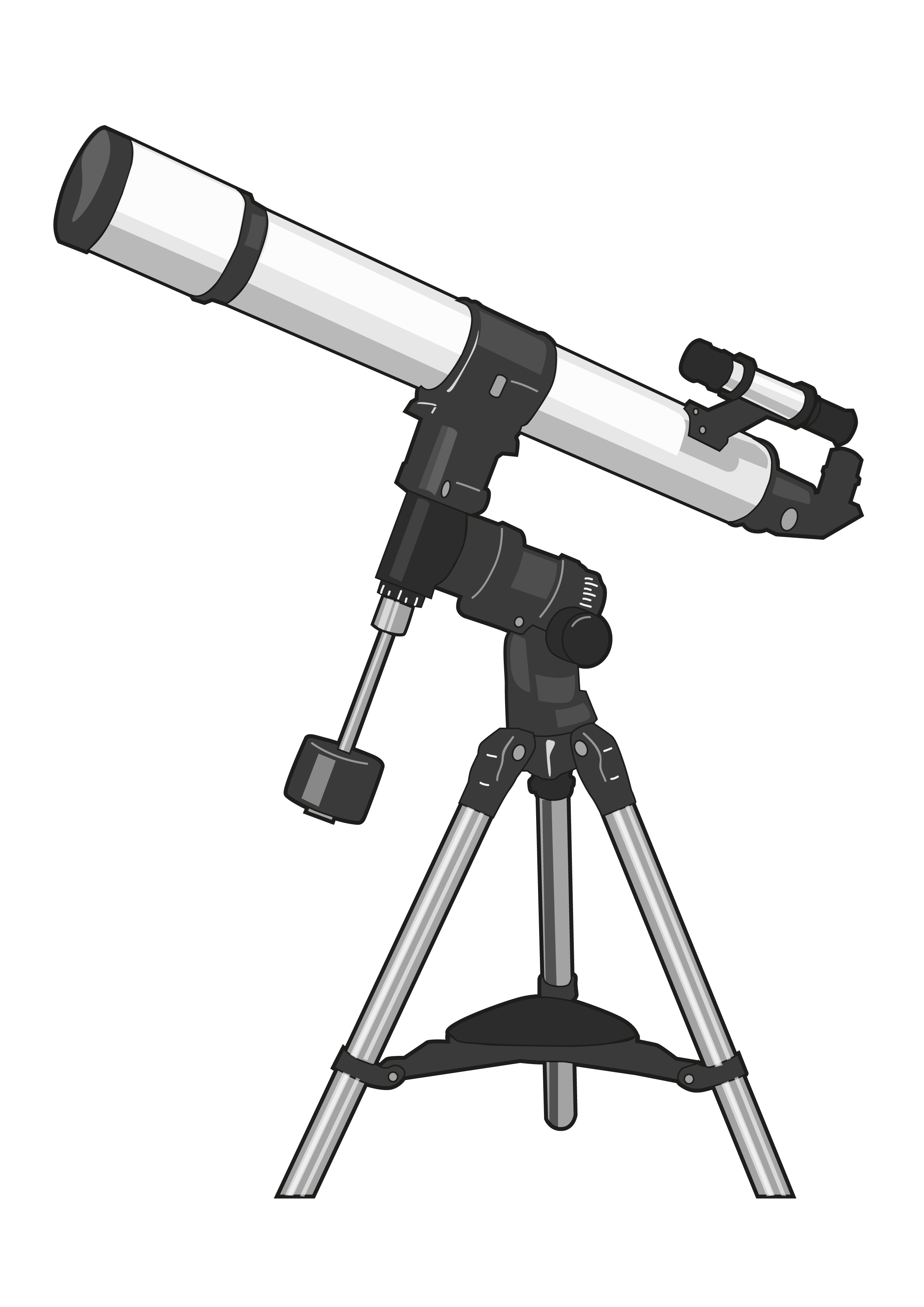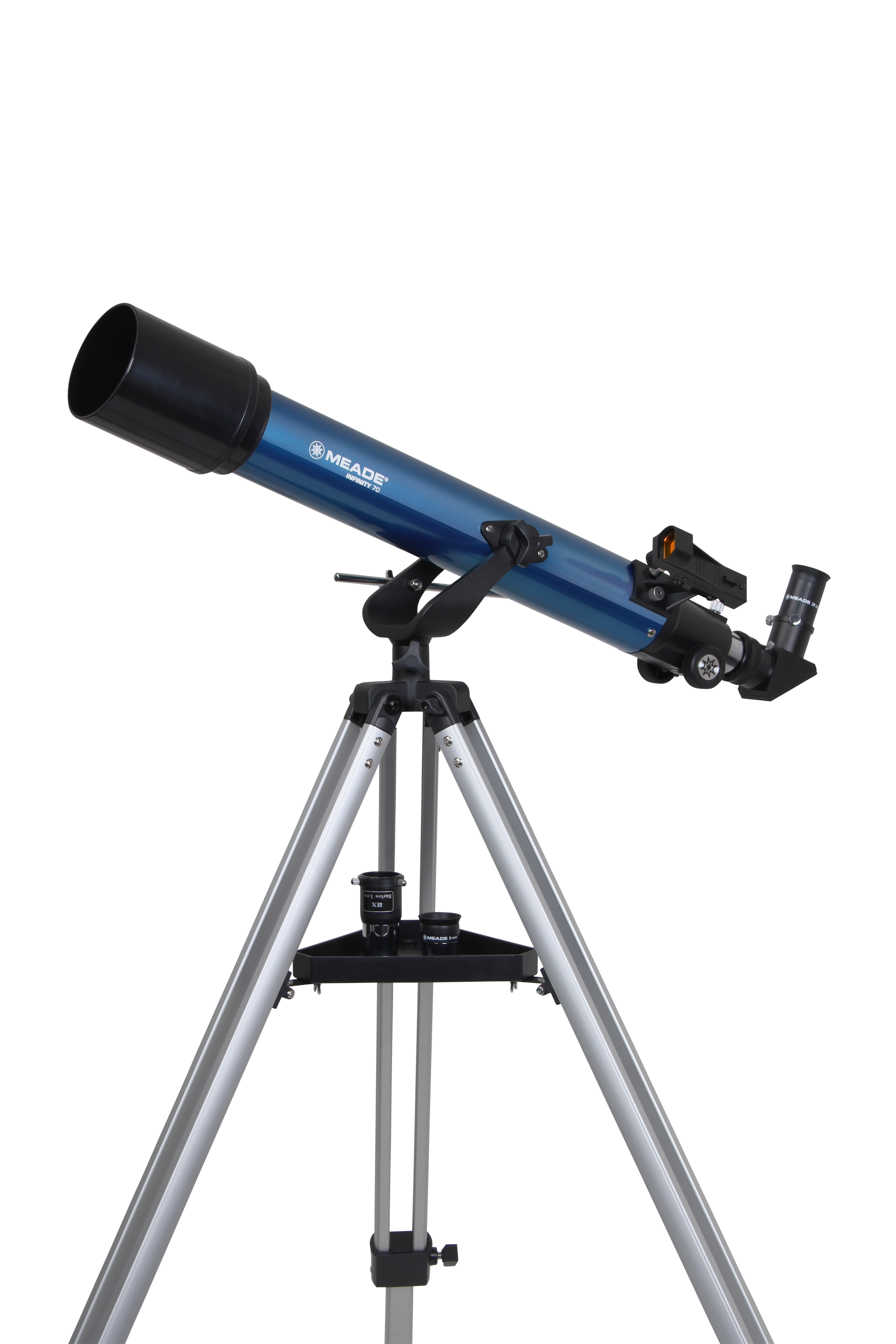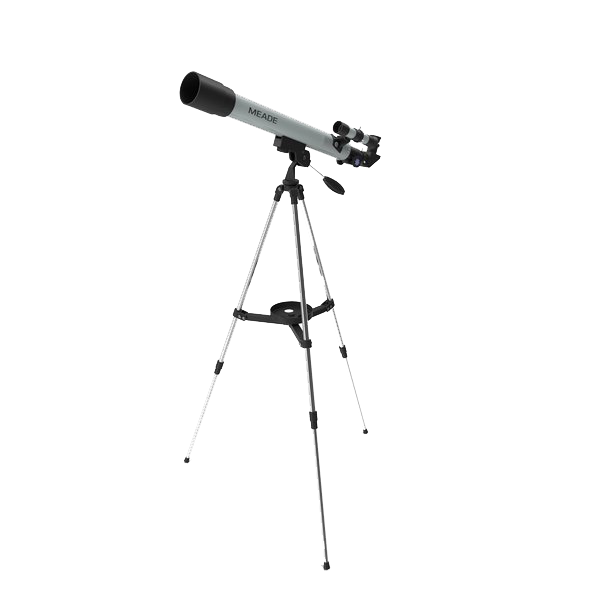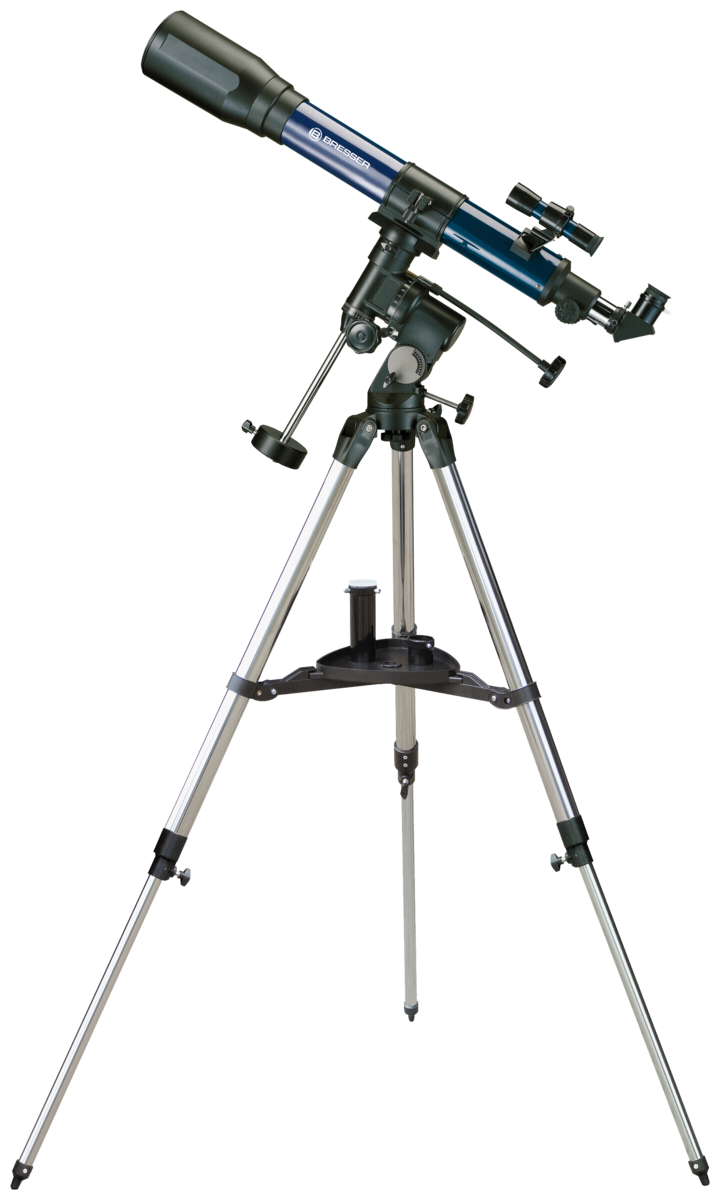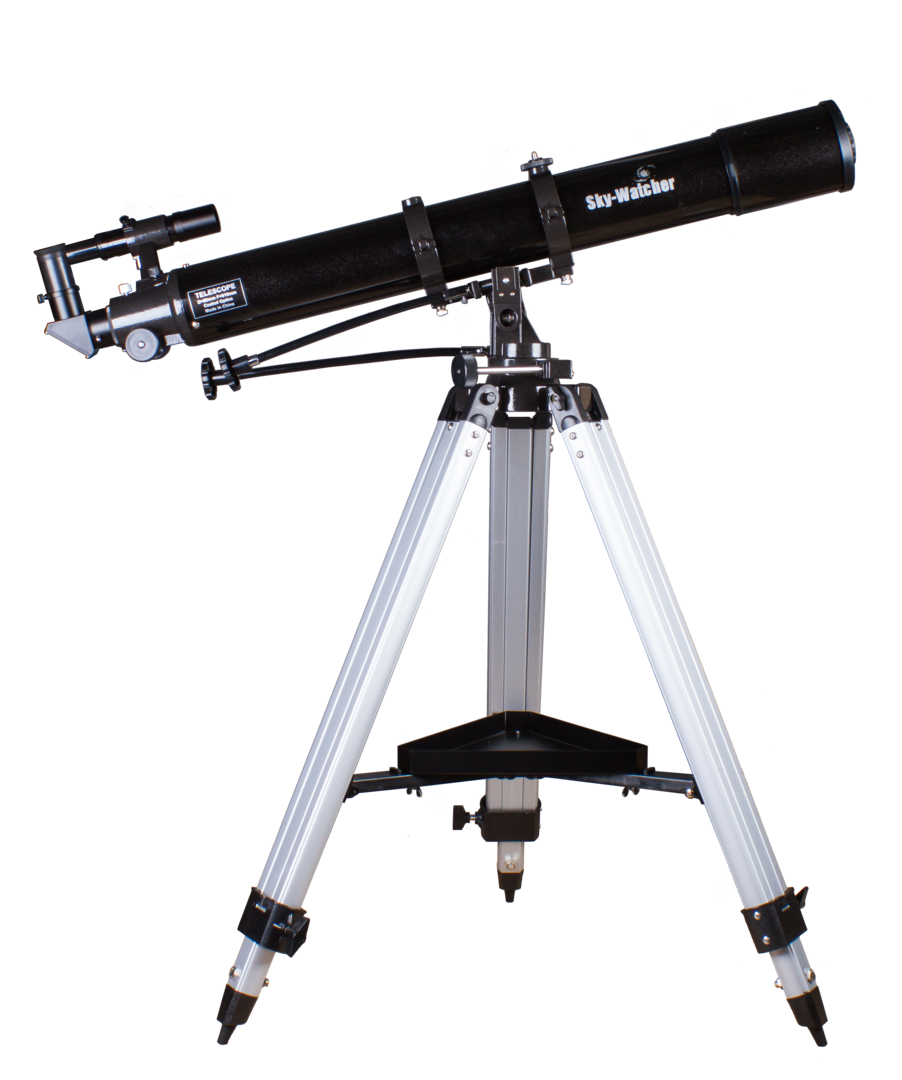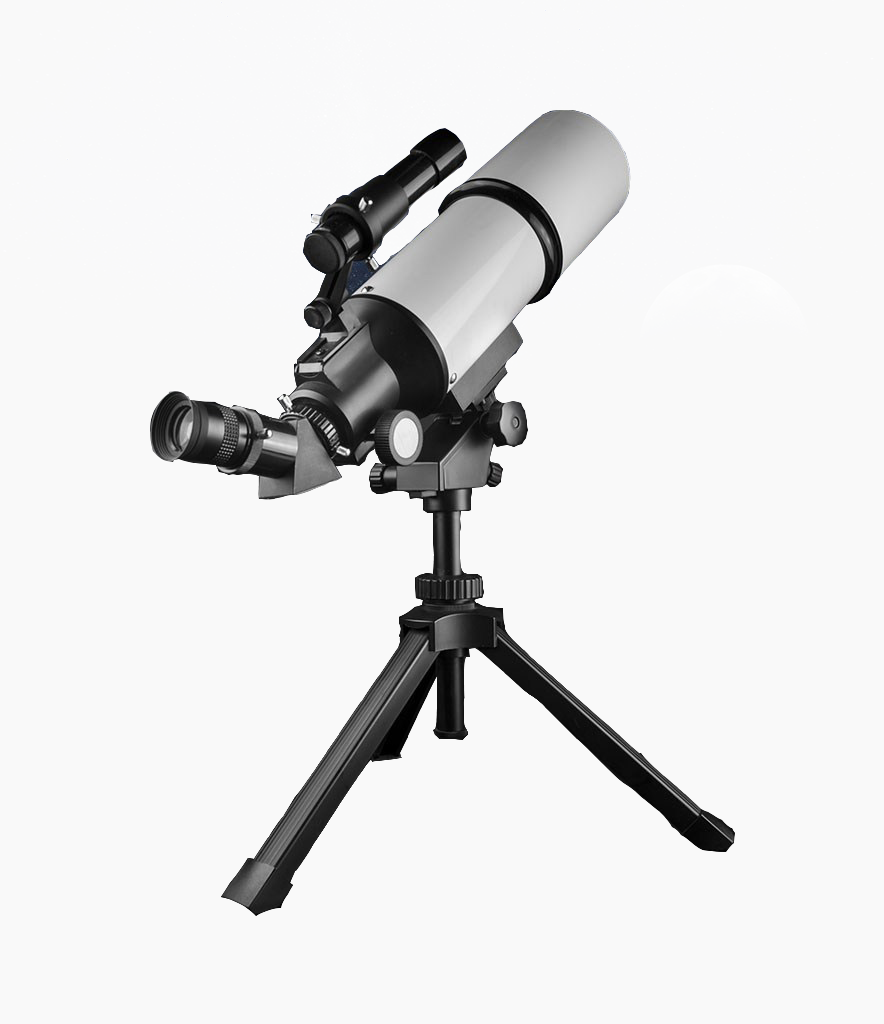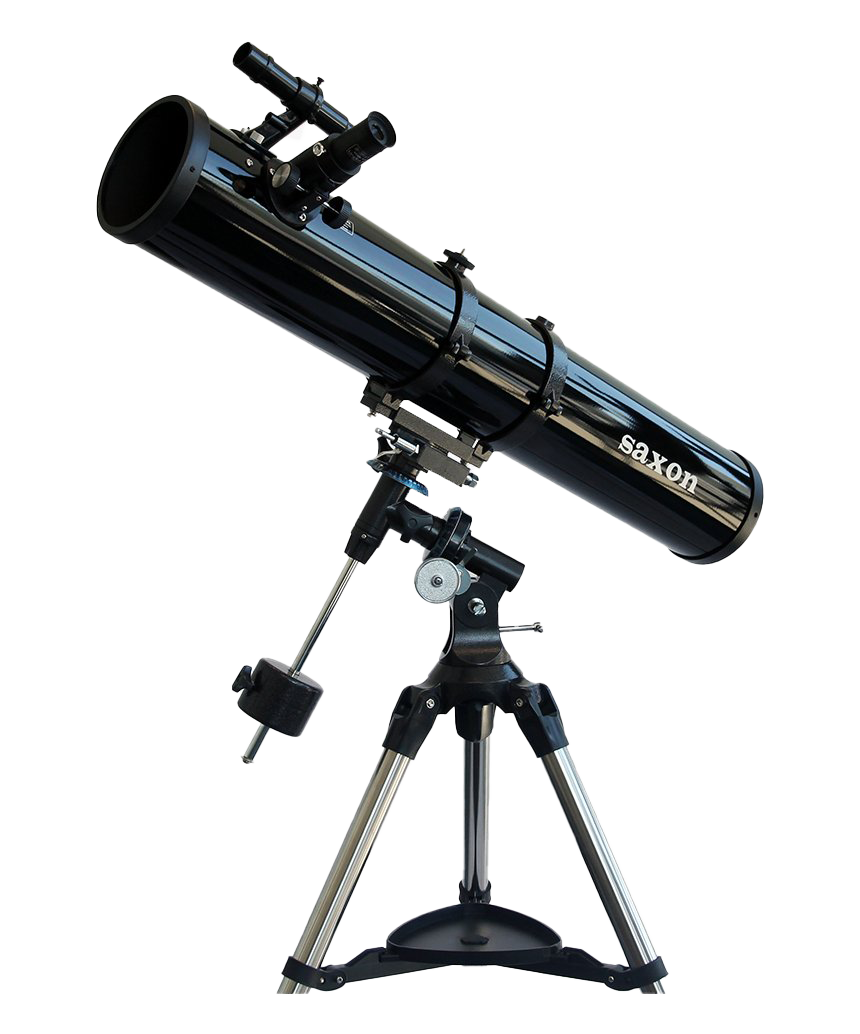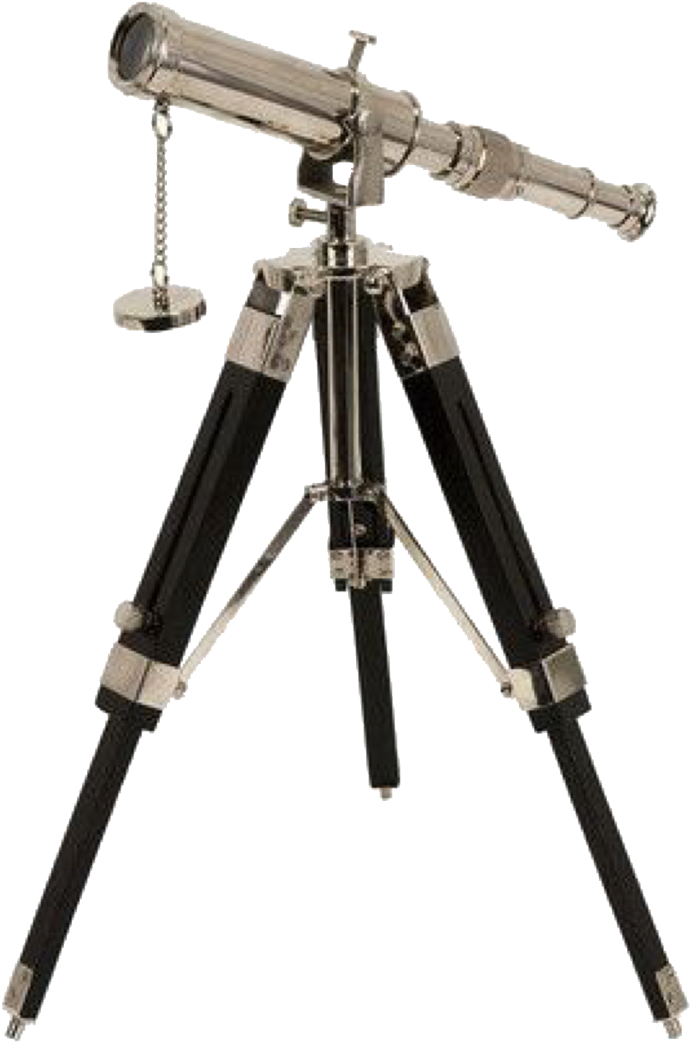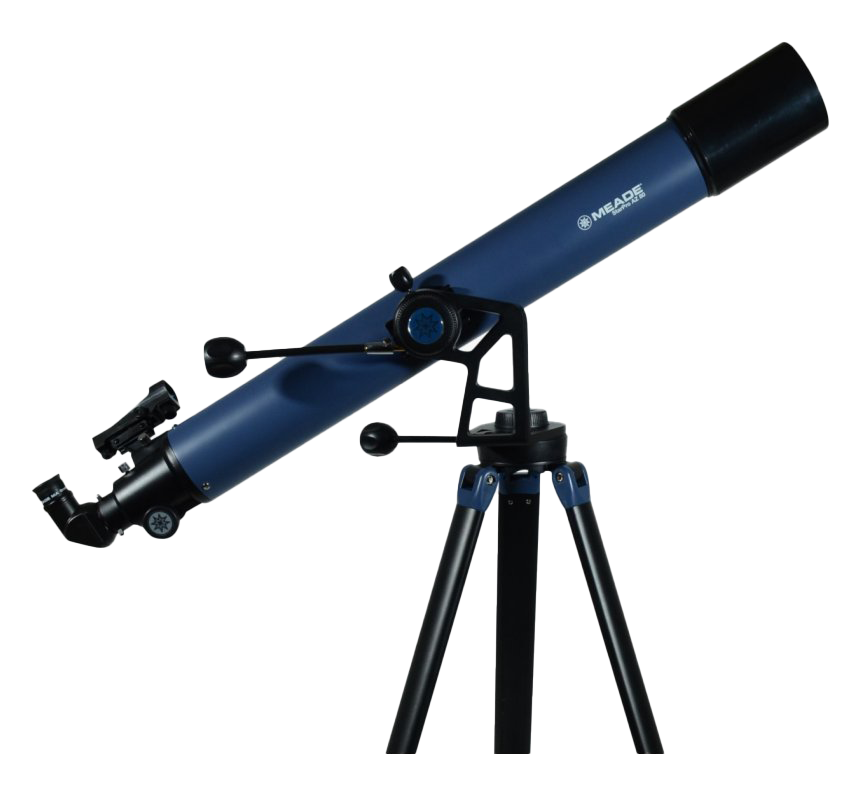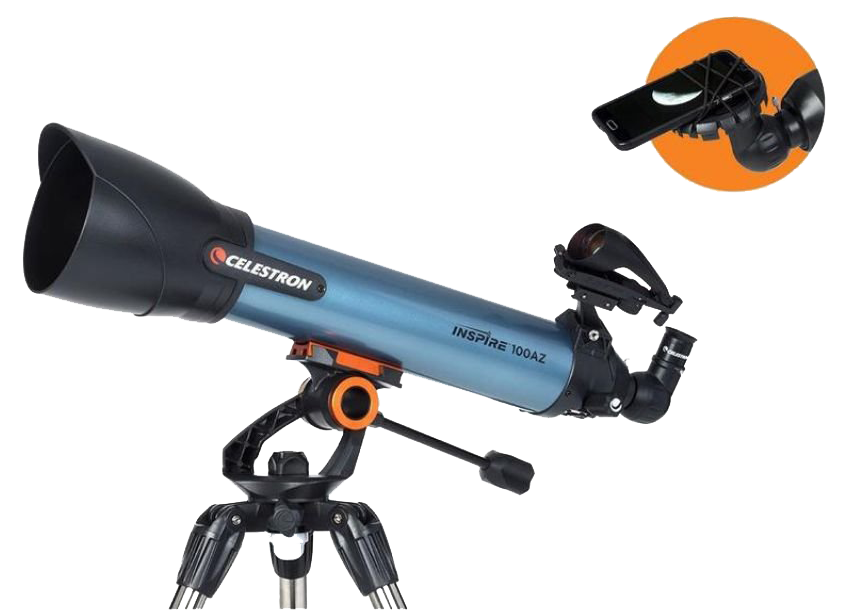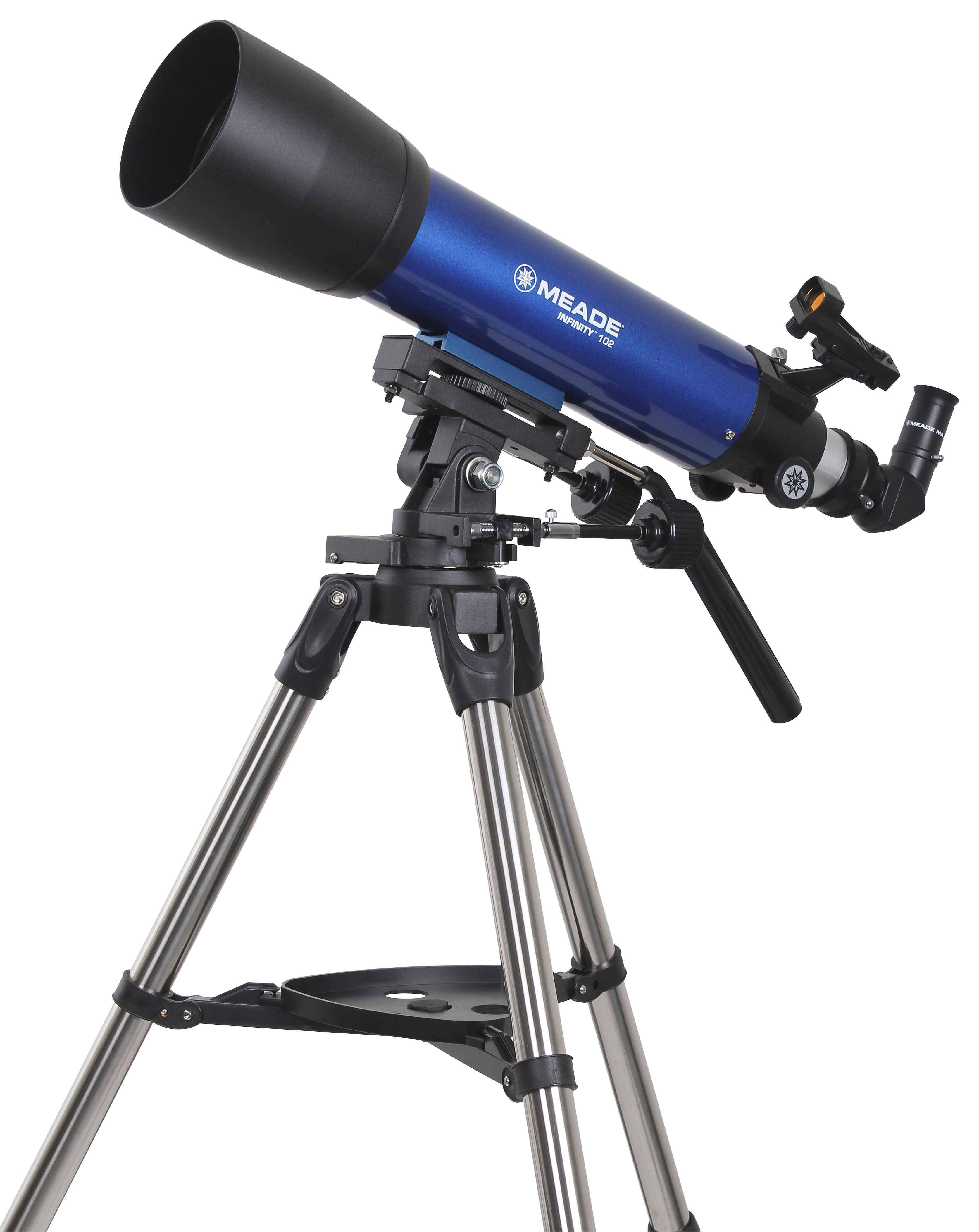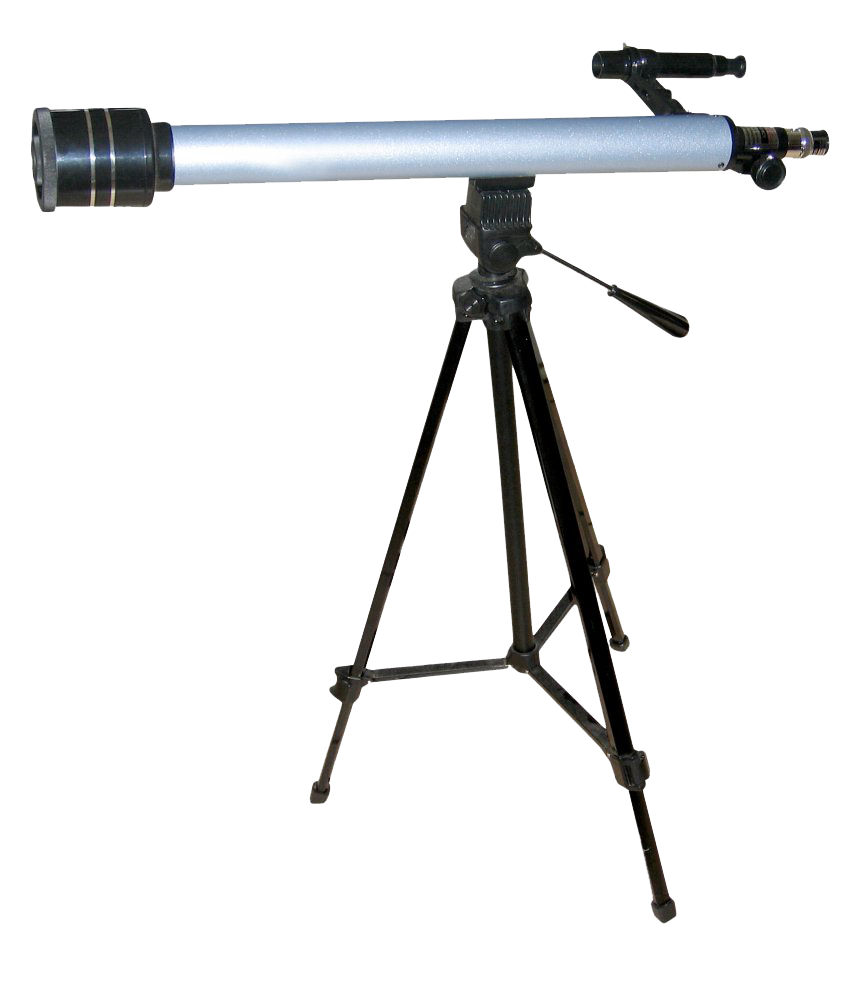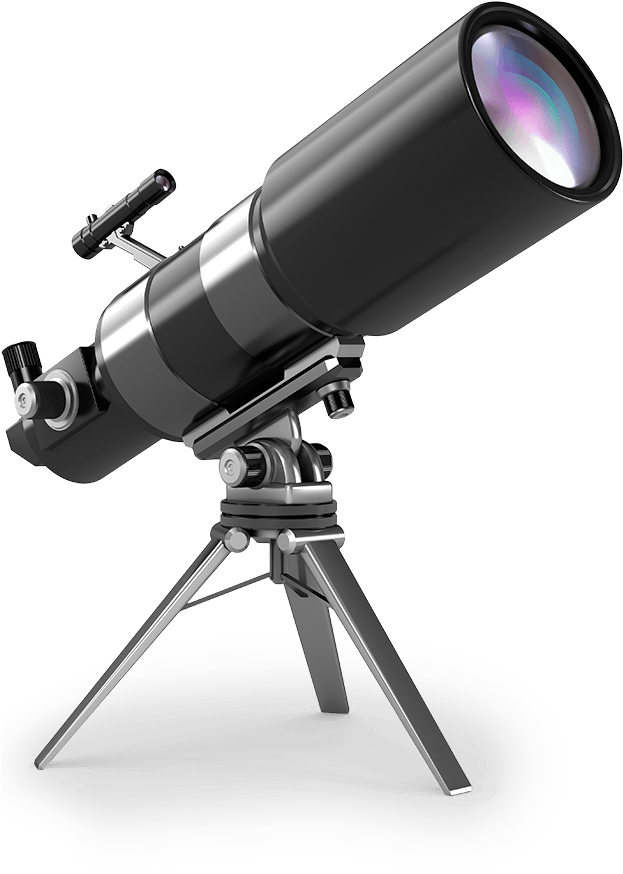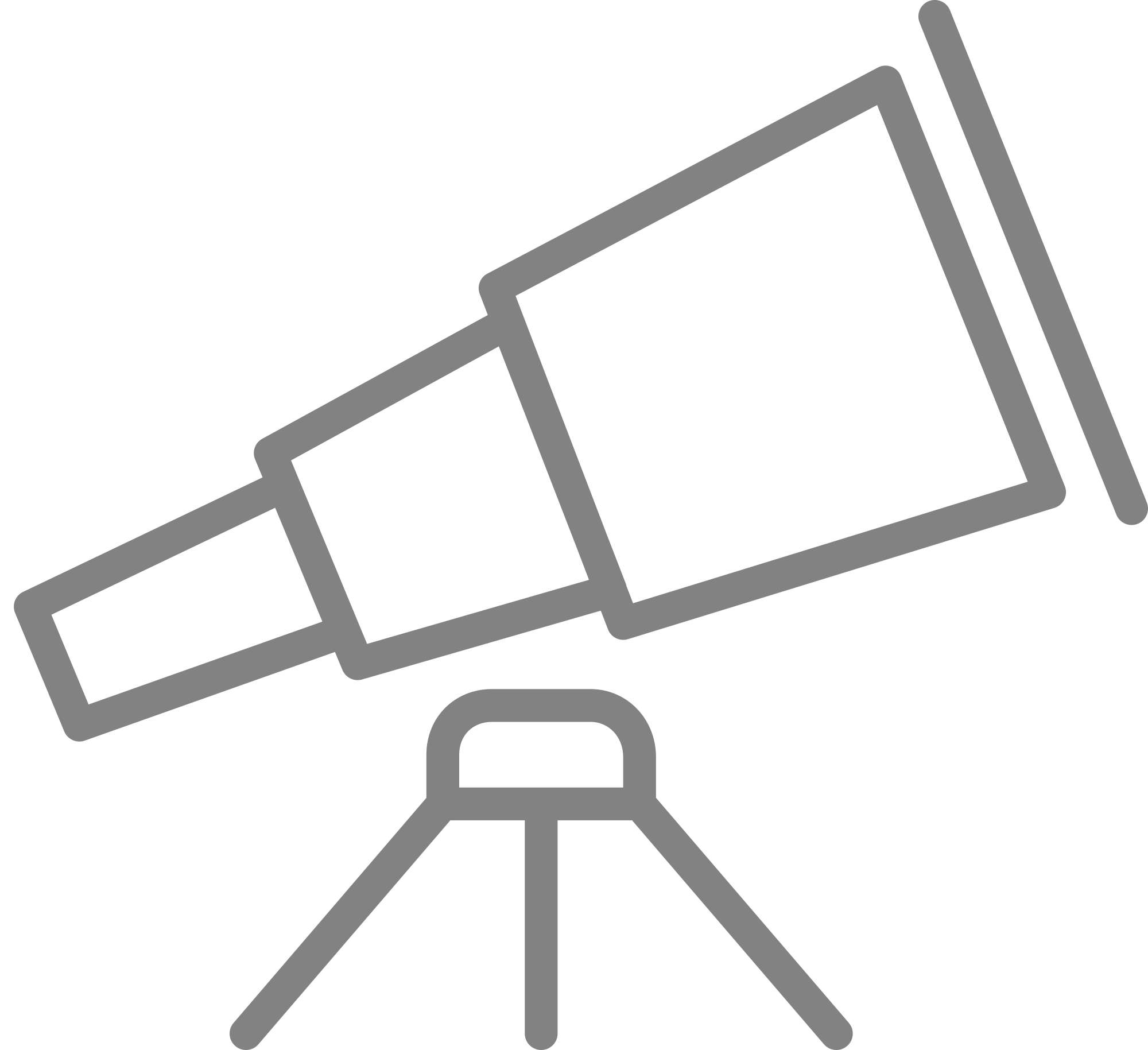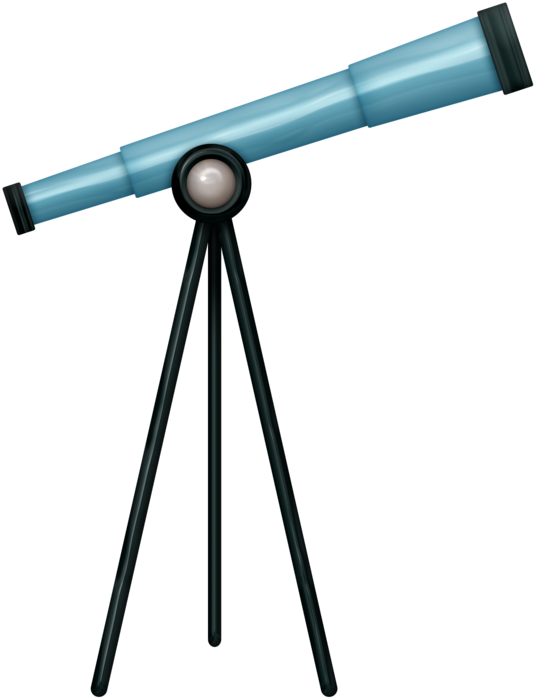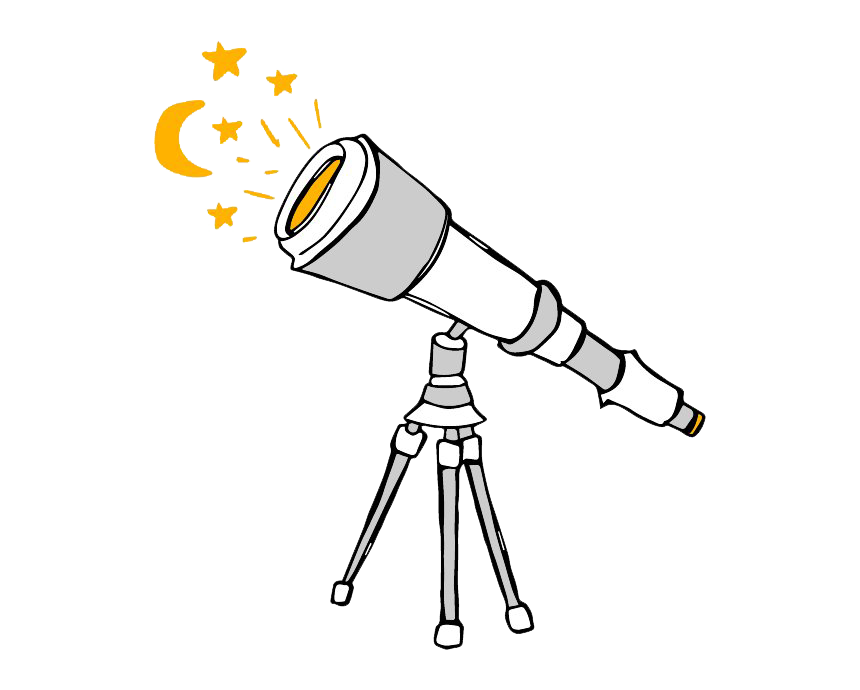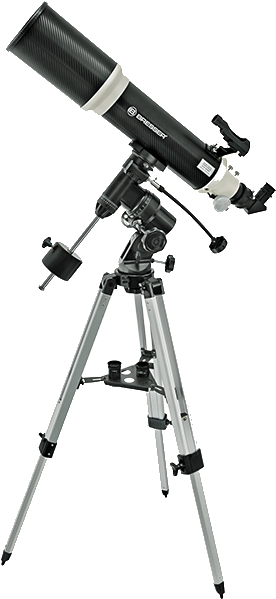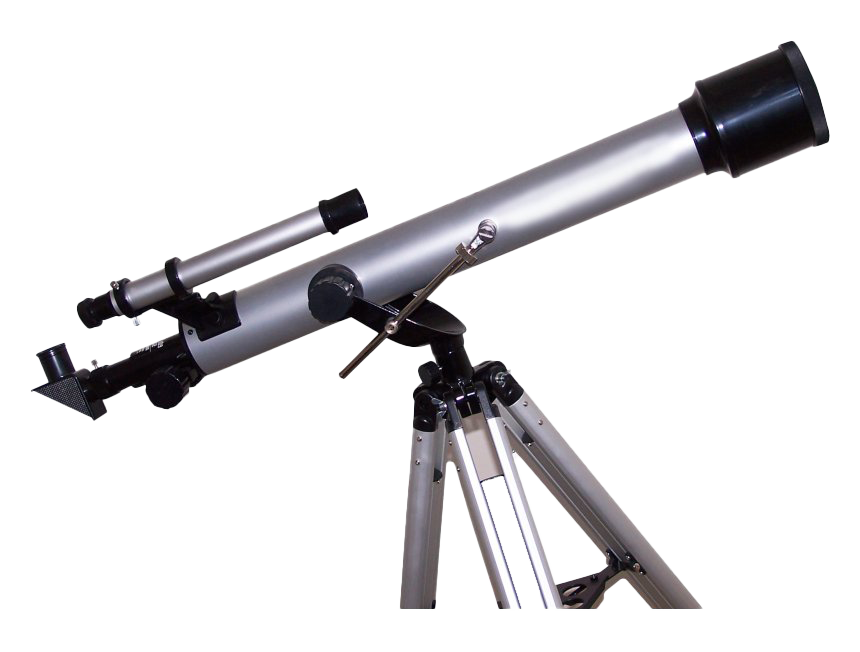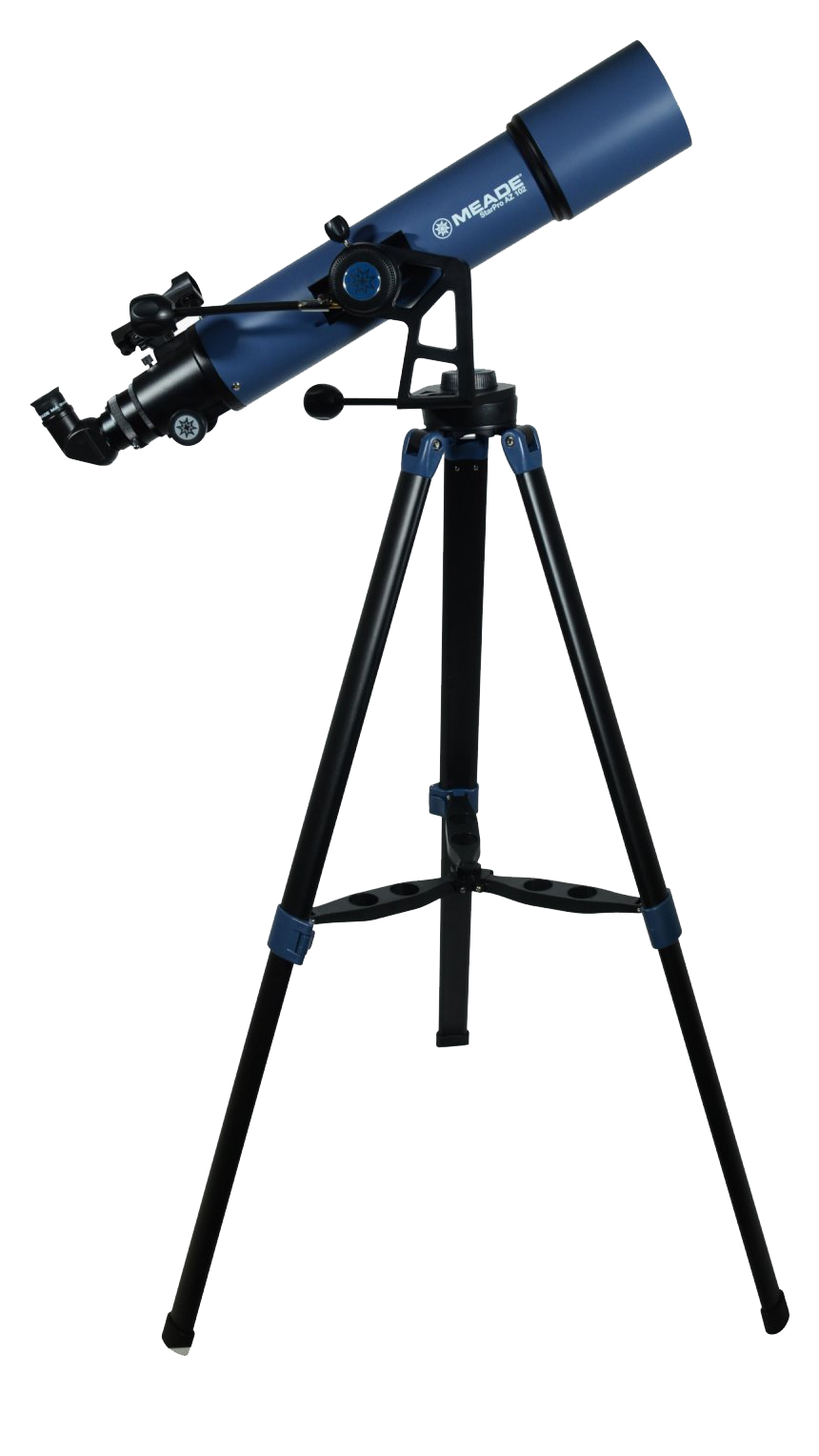Download top and best high-quality free Telescope PNG Transparent Images backgrounds available in various sizes. To view the full PNG size resolution click on any of the below image thumbnail.
License Info: Creative Commons 4.0 BY-NC
A telescope is an optical instrument that uses lenses, curved mirrors, or a combination of these to observe distant objects, or various devices used to observe distant objects by emitting, absorbing or reflecting electromagnetic radiation. The first known practical telescopes were refractive telescopes, invented in the Netherlands in the early 17th century using glass lenses. They have been used for both terrestrial applications and astronomy.
A reflective telescope, which uses mirrors to collect and focus light, was invented over the course of several decades as the first refractive telescope. Many new types of telescopes were invented in the 20th century, including radio telescopes in the 1930s and infrared telescopes in the 1960s. The word “telescope” now refers to a wide range of instruments capable of detecting different regions of the electromagnetic spectrum, and in some cases, other types of detectors.
The earliest telescope in existence was a 1608 patent filed with the government by Middelburg-based eyewear manufacturer Hans Lippershey for a refractive telescope. The real inventor is unknown, but rumors about him spread throughout Europe. Galileo heard about this and in 1609 built his own version and conducted telescopic observations of celestial objects.
The idea that the objective or light-collecting element could be a mirror rather than a lens was explored shortly after the invention of the refractive telescope. The potential benefits of using parabolic mirrors — reduced spherical aberration and no chromatic aberration — have led to many proposed projects and several attempts to build reflective telescopes. In 1668, Isaac Newton built the first practical reflective telescope, the design of which now bears his name – Newtonian reflector.
The invention of the achromatic lens in 1733 partially corrected the color aberrations present in simple lenses and made it possible to create shorter and more functional refractive telescopes. Reflecting telescopes, while not limited to the color problems seen in refractors, were made difficult by the use of fast tarnishing speculum metal mirrors used in the 18th and early 19th centuries, and the problem was solved with the advent of silver coated glass mirrors in 1857 and illuminated mirrors in 1932. The maximum physical size limit for refractive telescopes is about 1 meter (40 inches), which suggests that most large optical telescopes built in the late 20th century have reflectors. Currently, the largest reflector telescopes have targets over 10 meters (33 feet), and several projects are under development at 30-40 meters.
Download Telescope PNG images transparent gallery.
- Astronomical Telescope PNG Clipart
Resolution: 500 × 500
Size: 95 KB
Image Format: .png
Download
- Astronomical Telescope PNG File
Resolution: 438 × 594
Size: 147 KB
Image Format: .png
Download
- Astronomical Telescope PNG Free Download
Resolution: 920 × 831
Size: 134 KB
Image Format: .png
Download
- Astronomical Telescope PNG Free Image
Resolution: 500 × 500
Size: 109 KB
Image Format: .png
Download
- Astronomical Telescope PNG Image
Resolution: 755 × 614
Size: 137 KB
Image Format: .png
Download
- Astronomical Telescope PNG Picture
Resolution: 747 × 1080
Size: 244 KB
Image Format: .png
Download
- Astronomical Telescope PNG
Resolution: 900 × 836
Size: 79 KB
Image Format: .png
Download
- Astronomical Telescope Transparent
Resolution: 500 × 391
Size: 118 KB
Image Format: .png
Download
- Astronomical Telescope
Resolution: 1505 × 1197
Size: 799 KB
Image Format: .png
Download
- Refracting Telescope PNG Clipart
Resolution: 952 × 1200
Size: 505 KB
Image Format: .png
Download
- Refracting Telescope PNG Download Image
Resolution: 805 × 801
Size: 375 KB
Image Format: .png
Download
- Refracting Telescope PNG File Download Free
Resolution: 2500 × 2500
Size: 838 KB
Image Format: .png
Download
- Refracting Telescope PNG File
Resolution: 500 × 500
Size: 32 KB
Image Format: .png
Download
- Refracting Telescope PNG Free Download
Resolution: 512 × 512
Size: 10 KB
Image Format: .png
Download
- Refracting Telescope PNG Free Image
Resolution: 344 × 502
Size: 68 KB
Image Format: .png
Download
- Refracting Telescope PNG HD Image
Resolution: 1920 × 1575
Size: 732 KB
Image Format: .png
Download
- Refracting Telescope PNG High Quality Image
Resolution: 512 × 512
Size: 10 KB
Image Format: .png
Download
- Refracting Telescope PNG Image File
Resolution: 890 × 1307
Size: 600 KB
Image Format: .png
Download
- Refracting Telescope PNG Image HD
Resolution: 409 × 440
Size: 91 KB
Image Format: .png
Download
- Refracting Telescope PNG Image
Resolution: 1000 × 1000
Size: 19 KB
Image Format: .png
Download
- Refracting Telescope PNG Images
Resolution: 1087 × 1324
Size: 672 KB
Image Format: .png
Download
- Refracting Telescope PNG Photo
Resolution: 2480 × 3508
Size: 303 KB
Image Format: .png
Download
- Refracting Telescope PNG Pic
Resolution: 3456 × 5184
Size: 4812 KB
Image Format: .png
Download
- Refracting Telescope PNG Picture
Resolution: 600 × 600
Size: 47 KB
Image Format: .png
Download
- Refracting Telescope PNG
Resolution: 720 × 1200
Size: 417 KB
Image Format: .png
Download
- Refracting Telescope Transparent
Resolution: 902 × 1080
Size: 471 KB
Image Format: .png
Download
- Refracting Telescope
Resolution: 884 × 1024
Size: 538 KB
Image Format: .png
Download
- Telescope PNG Clipart
Resolution: 860 × 1034
Size: 420 KB
Image Format: .png
Download
- Telescope PNG Download Image
Resolution: 690 × 1042
Size: 511 KB
Image Format: .png
Download
- Telescope PNG File Download Free
Resolution: 512 × 512
Size: 205 KB
Image Format: .png
Download
- Telescope PNG Free Download
Resolution: 860 × 807
Size: 202 KB
Image Format: .png
Download
- Telescope PNG HD Image
Resolution: 850 × 610
Size: 249 KB
Image Format: .png
Download
- Telescope PNG High Quality Image
Resolution: 1200 × 1200
Size: 677 KB
Image Format: .png
Download
- Telescope PNG Image File
Resolution: 3348 × 4212
Size: 7323 KB
Image Format: .png
Download
- Telescope PNG Image HD
Resolution: 1024 × 1024
Size: 64 KB
Image Format: .png
Download
- Telescope PNG Image
Resolution: 860 × 992
Size: 210 KB
Image Format: .png
Download
- Telescope PNG Images
Resolution: 623 × 874
Size: 137 KB
Image Format: .png
Download
- Telescope PNG Photo
Resolution: 2000 × 1829
Size: 69 KB
Image Format: .png
Download
- Telescope PNG Pic
Resolution: 535 × 699
Size: 100 KB
Image Format: .png
Download
- Telescope PNG Picture
Resolution: 860 × 690
Size: 115 KB
Image Format: .png
Download
- Telescope PNG Transparent HD Photo
Resolution: 276 × 599
Size: 84 KB
Image Format: .png
Download
- Telescope PNG
Resolution: 860 × 652
Size: 232 KB
Image Format: .png
Download
- Telescope Transparent
Resolution: 860 × 1528
Size: 302 KB
Image Format: .png
Download
- Telescope
Resolution: 900 × 1575
Size: 469 KB
Image Format: .png
Download
